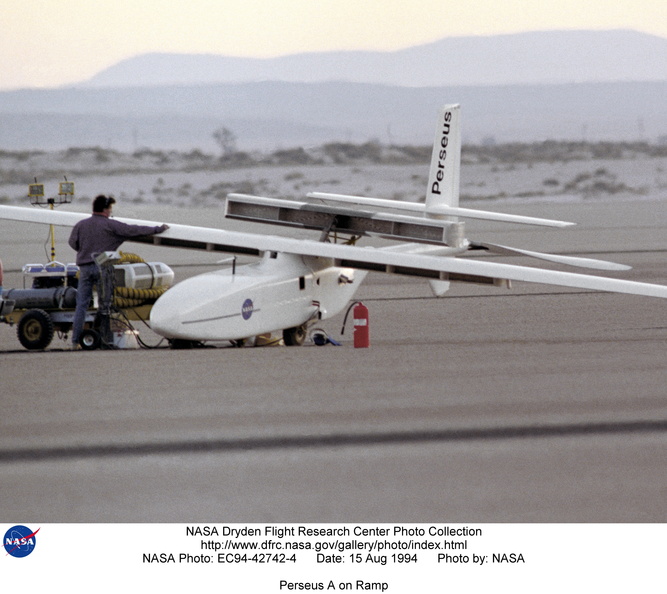
WIKIARCHIVES.SPACE
The Human Spaceflight Archive

Information
- Taken in
- Edwards Air Force Base
- Autor
- NASA
- Descrição
- The Perseus A, a remotely-piloted, high-altitude research vehicle, is seen just after landing on Rogers Dry Lake at the Dryden Flight Research Center, Edwards, California. The Perseus A had a unique method of takeoff and landing. To make the aircraft as aerodynamic and lightweight as possible, designers gave it only two very small centerline wheels for landing. These wheels were very close to the fuselage, and therefore produced very little drag. However, since the fuselage sat so close to the ground, it was necessary to keep the large propeller at the rear of the aircraft locked in a horizontal position during takeoff. The aircraft was towed to about 700 feet in the air, where the engine was started and the aircraft began flying under its own power.
- Aberta em
- Segunda-feira 15 Agosto 1994
- Albuns
- US SPACE PROGRAM / AERONAUTICS RESEARCH / Perseus
- Source link
- https://www.dfrc.nasa.gov/Gallery/Photo/Perseus/index.html
- Visitas
- 30
- Pontuação na avaliação
- Sem avaliação
- Classifique esta foto
- License
- Public Domain
- Modified by WikiArchives
- No (original)
- Descargas
- 1
Desenvolvido por Piwigo